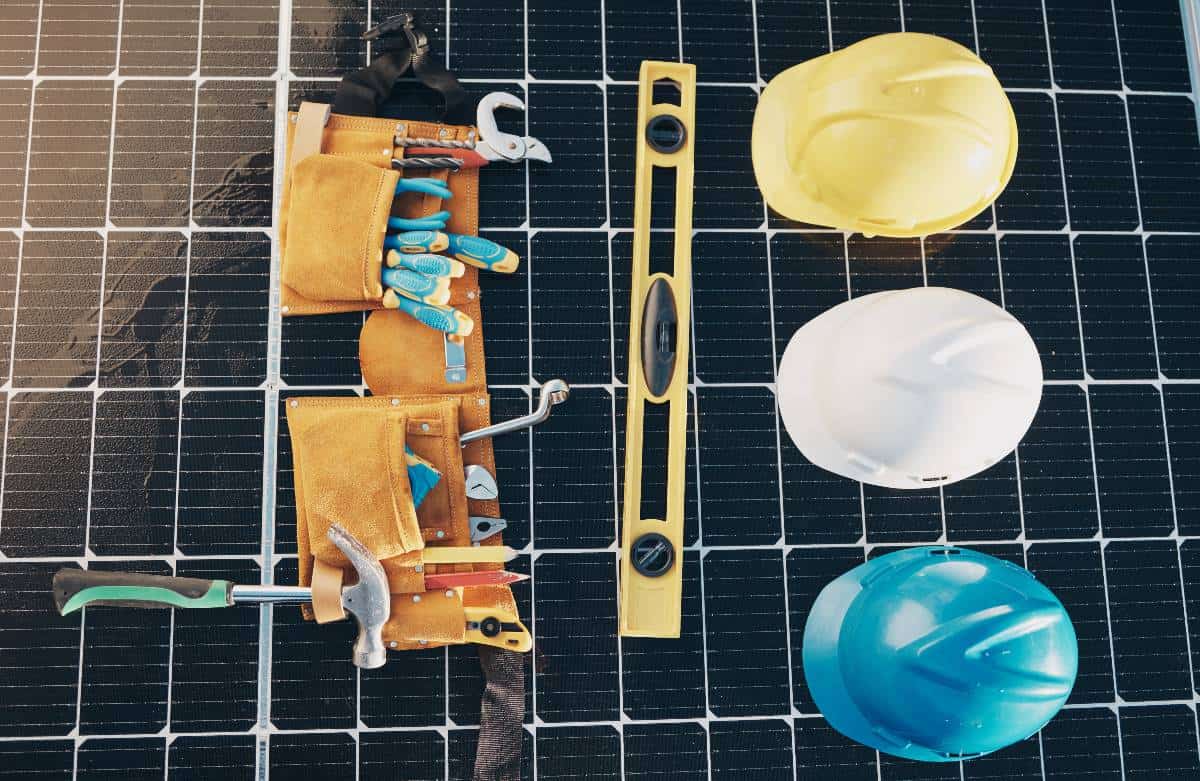Solar Panel Materials: What’s Used To Make Solar Panels?
Hey everyone! Tom here, founder of Electrik Living. I wanted to give you an inside look at solar panel materials – what your photovoltaic panels are actually made of. I know when I first started researching solar, I was curious about what goes into those panels on rooftops capturing energy from the sun. Once you understand the underlying materials and technologies, it sheds light on why different solar options have distinct advantages and disadvantages.
So whether you’re considering going solar or just want to know how these magical electricity generators work, read on for an illuminating tour behind the scenes! I promise it’ll be more fascinating than watching paint dry.
Key Takeaways
- Silicon is the predominant material used in most solar panels today, but new materials like perovskites are emerging.
- Crystalline silicon solar cells come in two main types: more efficient but expensive monocrystalline and cheaper but less efficient polycrystalline.
- Thin film solar cells made from materials like cadmium telluride are lightweight and flexible but have lower efficiency.
Demystifying What’s Inside Your Solar Panels
Crystalline Silicon Solar Cells Power Most Panels Today
The vast majority of solar panels today utilize crystalline silicon solar cells to convert sunlight into usable electricity. These cells are commonly classified into two types:
Monocrystalline Silicon – The High Performer
Among the various types of solar cells, mono-crystalline solar cells had a recorded lab efficiency of 26.7 percent in 2022.
- Monocrystalline silicon cells are made from a single continuous crystal of silicon, giving the electrons more freedom to move.
- This makes monocrystalline panels the most efficient, with average efficiencies around 20%, sometimes exceeding 23%.
- However, producing that uniform crystalline structure requires complex manufacturing, making monocrystalline the pricier option.
Polycrystalline Silicon – The Budget Buy
- In contrast, polycrystalline silicon cells are formed by melding together fragments of silicon crystals.
- The crystalline boundaries reduce electron freedom, decreasing efficiency to around 15-17%.
- But by simplifying manufacturing, polycrystalline panels lowered costs, making solar affordable for more people.
So in short: monocrystalline = Ferrari performance at Tesla prices, polycrystalline = Tesla capabilities at Toyota costs.
Thin Film Solar – Maximum Flexibility
While crystalline silicon dominates the solar landscape today, another promising technology is ramping up: thin film solar cells.
- Instead of using thick silicon wafers, thin film methods deposit photosensitive materials in thin layers onto backing like glass or plastic.
- Popular thin film materials include cadmium telluride (CdTe), copper indium gallium selenide (CIGS), and amorphous silicon.
- By reducing the active material needed, thin film solar cuts material costs significantly. panels also become lightweight and flexible.
However, thin film comes with disadvantages:
- Despite progress, thin film efficiency still trails behind crystalline silicon cells.
- The flexibility enables applications like solar shingles, but longevity remains uncertain.
Still, thin films have carved out key niches like powering satellites, RVs, and devices while continuing to make strides through innovations using materials like perovskites.

Perovskites & Quantum Dots – The Heirs to The Throne?
Looking towards the future, emerging technologies like perovskites and quantum dots show game-changing potential – perhaps enough to overtake today’s mainstream solar panels one day.
- Perovskite solar cells have achieved lab efficiencies exceeding 25%, rivaling crystalline silicon, but they haven’t proved stability over 25+ year lifetimes yet.
- Quantum dot photovoltaics also offer high theoretical efficiencies by tuning the quantum dot structure but face similar unanswered longevity concerns.
Once consistency and reliability questions have been resolved, these advanced solar technologies promise cheaper, high-efficiency solar electricity generation.
And there are even more exotic solar cell materials like organic or dye-sensitized solar cells being researched! The key is finding the right synergistic combination of high efficiency, proven stability, and affordability.

FAQs
What are the different types of solar panels?
The main varieties are crystalline silicon panels (monocrystalline and polycrystalline) which dominate today, thin film solar panels (cadmium telluride, amorphous silicon, and CIGS being common), and emerging new contenders like perovskite and quantum dot solar panels.
How long do solar panels last?
Most solar panels today have warranties guaranteeing at least 80% efficiency for 25 years. But many panels have operational lives over 30+ years. Lifetime is impacted by factors like materials degradation and weathering over time. New panels have shown improved longevity thanks to protective elements like back sheets and coatings.
How much do solar panels cost?
On average across the US, solar panels fall between $2.50–$4 per watts. This depends on factors like type (monocrystalline cost more than poly), supply and demand dynamics globally, import tariffs, and state/federal incentives. Panels make up around 30% of your total solar installation cost onsite.
Will solar panels work if the grid goes down?
For grid-tied systems, panels alone won’t give you power if there’s a blackout unless they’re paired with batteries. For continuous electricity when the grid fails, combining solar panels with backup batteries that store sunshine for nighttime and cloudy spells ensures your essential needs stay powered in emergencies.
What is the role of solar photovoltaic cells in capturing solar energy?
A: Solar photovoltaic cells, also known as solar PV cells, are the essential components of solar panels that capture sunlight and convert it into electricity, providing a sustainable energy source.
How has the solar industry been adopting new materials and technologies to enhance solar power generation?
The solar industry continues to explore and implement advancements like multi-junction solar cells, quantum dot solar cells, and flexible solar panels to improve efficiency and lower the cost of solar energy production.
Conclusion
I hope shining light on what solar panels are made of demystifies how these marvelous machines capture free sunshine and convert it into clean, renewable energy for our homes and buildings!
If you made it this far, bravo for wanting to understand the bits and bolts empowering the solar movement so we can power our lives sustainably.
Ready to electrify your lifestyle? From solar panels to electric vehicles, Electrik Living is here to provide resources and advice during your transition to lower bills, energy independence, and leaving a small footprint on this precious planet we call home.
